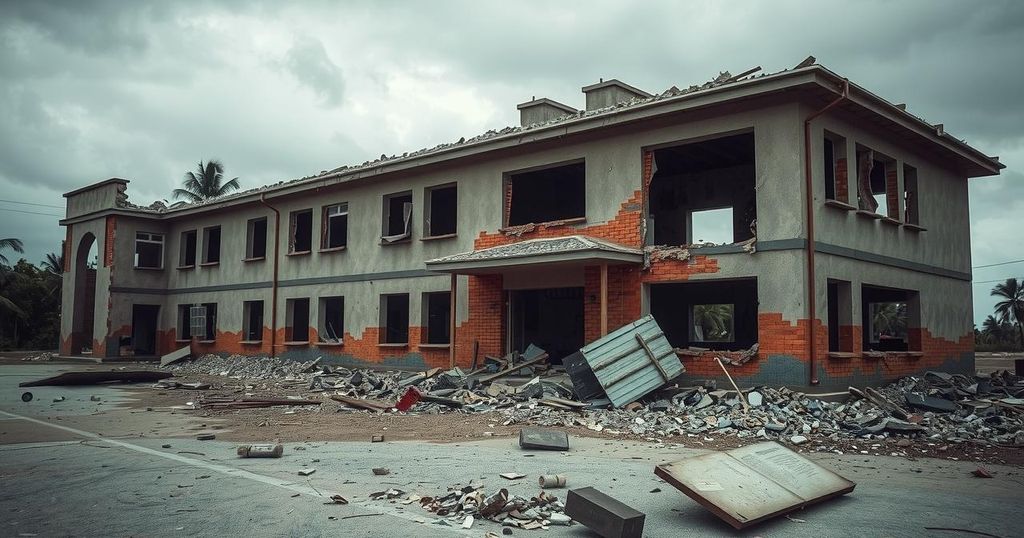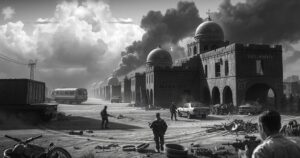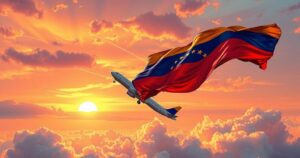Scars of War: Goma Struggles Amid Ongoing Conflict in Eastern DR Congo

Goma, once a lively hub in eastern DR Congo, is now under the control of the M23 rebel group. Following their takeover on January 27, the region faces severe humanitarian challenges, including displacement, violence, and a collapsed infrastructure. Despite a ceasefire attempt, the conflict continues to escalate, highlighting the complexities and challenges for residents seeking normalcy amidst ongoing hostilities.
GOMA, Democratic Republic of the Congo (DRC) — The eastern city of Goma, once vibrant and thriving below towering Mount Nyiragongo, has transformed into a shadow of its former self in the wake of ongoing conflict. Since the March 23 Movement (M23) rebel group seized control on January 27, the city has experienced a profound disarray. This has left the local population, numbering over two million, grappling with daily disruptions and continued violence.
The M23’s takeover marked a significant moment, reminiscent of similar occurrences in 2012 when the same group temporarily captured Goma. Since early February, the situation has intensified; heavy shelling turned residential areas into war zones, taking a heavy toll on infrastructure and human life. Government reports indicate that the violence has resulted in over 8,500 fatalities and nearly 5,600 injuries. Displacement camps also suffered, with tragic reports of pregnant women and newborns perishing amidst the chaos.
Despite a “humanitarian ceasefire” declared by M23 on February 4, violence has persisted across the North and South Kivu provinces. The group has since made advances, including capturing Bukavu, the capital of South Kivu, thereby establishing an extensive network of frontline positions.
Analysts suggest that the conflict may be moving into a more entrenched phase. Corneille Nangaa, a prominent figure as the leader of the Congo River Alliance, has made statements about expanding their control to the capital, Kinshasa, exacerbating fears among locals. Following Goma’s fall, societal order quickly unraveled. The once-busy commercial districts are deserted, and as the cash crisis deepens, criminal activity has surged, particularly at night.
The humanitarian crisis has unfolded tragically, with over 1.2 million people displaced since the beginning of the year, as reported by the International Organization for Migration. Many who sought refuge in Goma have been rendered homeless yet again, fleeing as towns were rendered uninhabitable due to violence.
In February, the M23 issued an ultimatum for the evacuation of significant displacement camps, leading to forced departures. Families fled with minimal belongings, returning to find their homes destroyed, land scorched, and travel routes obstructed. Just 27 kilometers from Goma, the town of Sake has become a focal point of intense conflict, with battles ruining local areas.
Unexploded ordnance now litters the landscape. Local resident Christian Kabuya noted, “We have found live shells in over ten locations,” with tragic consequences as lives are lost to accidental explosions, especially among children. The situation surrounding medical care is dire, as Ndosho Hospital, the last facility still treating the injured, struggles under immense pressure, bolstered by the Red Cross.
Taoffic Mohamed Toure, a seasoned ICRC worker, encapsulates the complexity of the region by stating, “The sheer number of actors and the recurring violence make eastern Congo one of the most challenging places we operate.” With diplomacy failing and ceasefires breaking down, the situation remains bleak for the eastern DRC community. For Goma, where the landscape is marred by conflict and previous volcanic activity, the long-lasting scars of war continue to linger, leaving many residents in despair.
In summary, the city of Goma in eastern DRC stands as a stark representation of conflict’s aftermath. The takeover by the M23 rebel group has plunged the city into turmoil, with significant loss of life and widespread displacement. Even as humanitarian efforts attempt to assist the local population, ongoing violence and instability make the road to recovery seem daunting. With the humanitarian crisis escalating and no resolution in sight, the people of Goma face an uncertain future marked by the scars of war.
Original Source: english.news.cn






